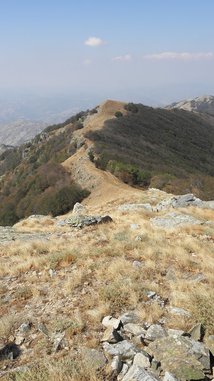Border: Bulgaria-Greece
Date(s) of establishment: 1908 - Current demarcation in 1919Length of border: 475 km
Regions concerned: Greece – East Macedonia and Thrace, Central Macedonia;
Bulgaria – Blagoevgrad, Smolyan, Kardzhali, Haskovo
European programme(s):
- Interreg IV A "Greece - Bulgaria"
Website of the programme
The programme on the Inforegio website
At 475 km in length, the border between Bulgaria and Greece begins in the west at the tripoint between the borders of Bulgaria, Greece and Macedonia. The border extends eastwards through the Nestos valley, up to the border tripoint between Greece, Bulgaria and Turkey, where it crosses the river called “Maritsa” by the Bulgarians and “Evros” by the Greeks.
This border is in large part formed by the Rhodope mountain range. The busiest border crossing point is the Struma valley, the second busiest is close to the Turkish border, in the Maritsa/Evros valley.
History
In 1908, following the First Balkan War, Bulgaria obtained its independence from the Ottoman Empire, thus creating the border between Greece and Bulgaria. Before this point, Greece had only a single terrestrial border (with the Ottoman Empire). Following the two Balkan Wars of 1912 and 1913 (the second between Greece and Bulgaria), the border was established with the Treaty of Bucharest, fixing its position in the Nestos valley, a few kilometres east of the river.
After the First World War, the border was modified, with Bulgaria ceding East Thrace to Greece under the terms of the Treaty of Neuilly-sur-Seine, thus losing its access to the Aegean Sea. Further modifications occurred during the Second World War, with Bulgaria taking possession of part of Greek Macedonia and recovering East Thrace. However, at the end of the conflict, the 1919 border was restored, and has since remained unchanged.
Cross-border cooperation
The border territory is partly made up of high mountains, making access to the region and crossing the border difficult.
Greece has been a member of the European Union since 1981, with Bulgaria joining more recently in 2007.
The Greek side of the border is currently facing a significant financial crisis while the Bulgarian side is confronted with an ageing population and a shrinking labour force. In order to meet these challenges, the 2007-2013 Interreg programme aims to develop the knowledge-based economy and to transform the region into a centre for sustainable development.
The main objectives of the programme are the improvement of quality of life and the joint protection and promotion of the natural resources in the border area, in order to underpin balanced economic growth. Other cross-border topics and issues include cultural heritage and health issues.
Given the mountainous terrain, development of the region requires improvement of the existing transport networks and of accessibility in general. The objective is to enable greater mobility of goods and people. The development of transport provision is therefore essential, particularly for making infrastructure on either side of the border compatible.
In order to stimulate the economy and entrepreneurship, measures supported by the programme also focus in particular on innovation, ICT, and the creation of a cross-border labour market.
Despite relations marked by a difficult past, cross-border cooperation, as a vector of stability, appears today to be well underway.
Photo copyright : Ivan Nikoloff


